Dead or Alive: Final Blu-ray Movie
HomeDead or Alive: Final Blu-ray Movie 
Arrow | 2002 | 89 min | Not rated | No Release Date
Price
Movie rating
6 | / 10 |
Blu-ray rating
| Users | 0.0 | |
| Reviewer | 2.0 | |
| Overall | 2.0 |
Overview
Dead or Alive: Final (2002)
The ace cop of a totalitarian police force and a drifting android play their parts in a post-apocalyptic society. They are destined to fight. Their encounter will change them forever.
Starring: Shô Aikawa (II), Riki Takeuchi, Hiro Hayama, Josie Ho, Tony HoDirector: Takashi Miike
| Foreign | Uncertain |
| Crime | Uncertain |
| Sci-Fi | Uncertain |
Specifications
Video
Video codec: MPEG-4 AVC
Video resolution: 1080i (upconverted)
Aspect ratio: 1.78:1
Original aspect ratio: 1.85:1
Audio
Japanese: LPCM 2.0 (48kHz, 24-bit)
Subtitles
English SDH
Discs
Blu-ray Disc
Single disc (1 BD)
Playback
Region A (B, C untested)
Review
Rating summary
| Movie | 2.0 | |
| Video | 1.5 | |
| Audio | 4.0 | |
| Extras | 1.5 | |
| Overall | 2.0 |
Dead or Alive: Final Blu-ray Movie Review
Reviewed by Jeffrey Kauffman April 3, 2017Note: This film is available as part of the Dead or
Alive Trilogy.
For those unfamiliar with Takashi Miike, perhaps taking a cue from St. Thomas Aquinas’ famous quote about belief could be of some aid. Aquinas
wrote,
“To one who has faith, no explanation is necessary. To one without faith, no explanation is possible.” Taking that formulation as a foundation, one
might amend it slightly to say “For those who have seen a Miike film, no explanation is necessary. For those who haven’t, no explanation is
possible.”
As I mentioned in the relatively recent reviews of
Takashi Miike’s Black Society Trilogy, this provocateur’s filmography is extremely varied, as well as extremely numerous. Somewhat
similarly to the Black Society Trilogy, a trifecta in name only (more or less), Miike’s Dead or Alive Trilogy offers only some relatively
tangential linking elements (including its stars, again like Black Society Trilogy) while serving up Miike’s typically hyperbolic take on various
underworld activities. In a way Miike tends to remind me at times of Quentin Tarantino, for he’s an artist with an obvious understanding of structure
and film technique who nonetheless is more apt than not to throw caution to the wind and dispense with traditional methods of exposition and
especially presentation in an effort to kind of virtually shake the audience into either submission or, perhaps, outright revulsion. Those with
squeamish
sensibilities are therefore probably best advised to approach Miike’s work with extreme caution, though those with a certain amount of fortitude will
discover a filmmaker of such unusual talents that one way or the other his productions are unforgettable.
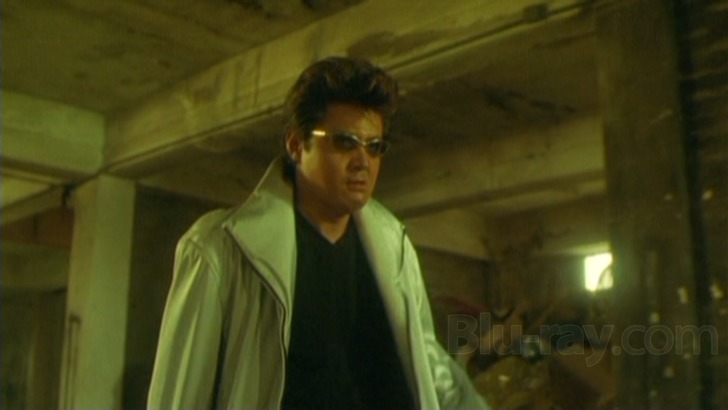
Any concerned environmentalist who is up in arms over where the planet may be headed (extinction?): take heart, the future is definitely green, at least if the ragged video quality on display in Dead or Alive: Final is any indication. It’s a little hard to adequately “enjoy” this Miike effort since it was obviously done quickly and without much in the way of expense (at least as evidenced by what’s on screen), and which is further debilitated by a video presentation that is (to say the least) lackluster.
This cheapo knockoff of at least some elements of Blade Runner takes place in the 24th century (which looks awfully like 2002, but I digress), where humans and androids coexist a bit uneasily. A fascistic dictator named Woo (Richard Cheung) has required the human population to take birth control pills in an effort to keep things relatively habitable, and he utilizes Honda (Riki Takeuchi), an android with what appears to be an Elvis obsession (at least as evidenced by his appearance), to keep the rabble in line. Meanwhile, a guerilla force of resistors has arisen, ultimately joined by another android named Ryo (Show Aikawa).
In a way, Dead or Alive: Final would seem to be the best set up of this supposed “trilogy”, one that could offer Miike’s always piquant visual sensibilities the chance to really stretch out and say something. But Miike himself is known as something of a guerilla, and his penchant for churning out almost unbelievable amounts of product sometimes tends to undercut his artistic proclivities, and it’s arguable that that’s what’s happened with this particular film. While the narrative is at least fairly straightforward, Miike just can’t get around the fact that from a production design standpoint, this is one pretty “present” looking future, and what must have been a miniscule budget means that even the “special effects” are barely in the “special” category.
Dead or Alive: Final is probably the most (intentionally) funny of the three films in this set, with Miike’s often off kilter humor just kind of showing up willy nilly at times. There’s more traditional Miike hyperbolism with regard to sexual activity, including a lot of gay elements, albeit this time ported over to the “high tech” world of androids.
Dead or Alive: Final Blu-ray Movie, Video Quality 
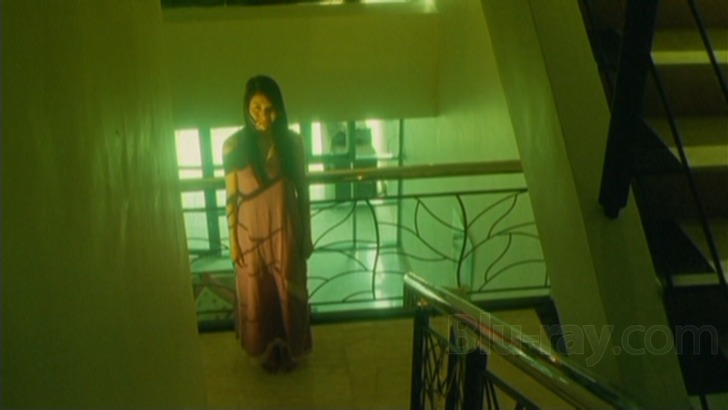
Dead or Alive: Final is presented on Blu-ray courtesy of Arrow Video with an AVC encoded 1080i (upscaled) transfer in 1.78:1. Arrow's insert booklet has the perhaps misleading statement that "Dead or Alive: Final contains a treated image with visible interlacing. This presentation is intentional and in keeping with the original release." A text card at the beginning of the actual film actually provides a little more information about all of this and states:
Dead or Alive: Final was shot and produced digitally in standard definition. As such, we have presented this film in the highest quality possible, using an NTSC tape master, as no suitable high definition masters of the film were ever produced. There are instances of Japanese subtitles appearing on screen over Chinese and English dialogue. This is inherent in the master materials and could not be removed.The upshot is that it may be arguable how "intentional" some of the anomalies on display are, but this is one pretty ragged looking presentation by any standard. The color timing is almost weirdly green most of the time, and interlacing effects are all over the place, from the edge of the glasses Honda wears to the kitana that is used to virtually anything with a straight line on it. There are also extremely prevalent sharpening halos on display throughout the presentation (some of which can be seen in the screenshots accompanying this review). As a result, detail is negligible throughout Dead or Alive: Final and this is really "high definition" in name only. Now, I wouldn't put it past Miike to want one of his productions to have an "old school" appearance, but I seriously doubt he intended things to look quite like this.
Dead or Alive: Final Blu-ray Movie, Audio Quality 
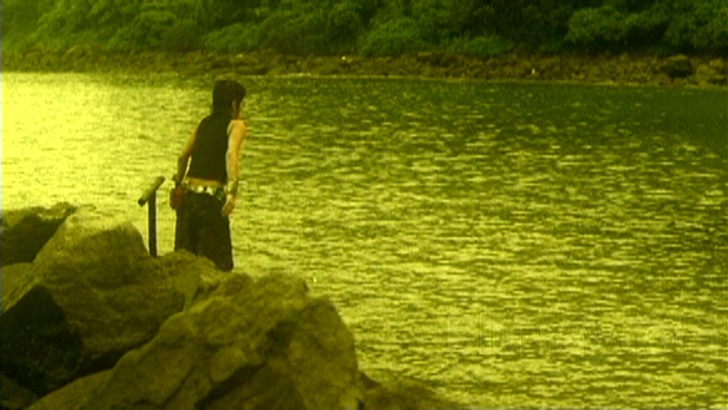
Luckily, Dead or Alive: Final's LPCM 2.0 track has none of the off putting tendencies of the video presentation. While there aren't a glut of "futuristic" sound effects in this film (perhaps another sign of its low budget), what's here sounds very good, with dialogue and effects resonating with decent force and with no damage to report.
Dead or Alive: Final Blu-ray Movie, Special Features and Extras 
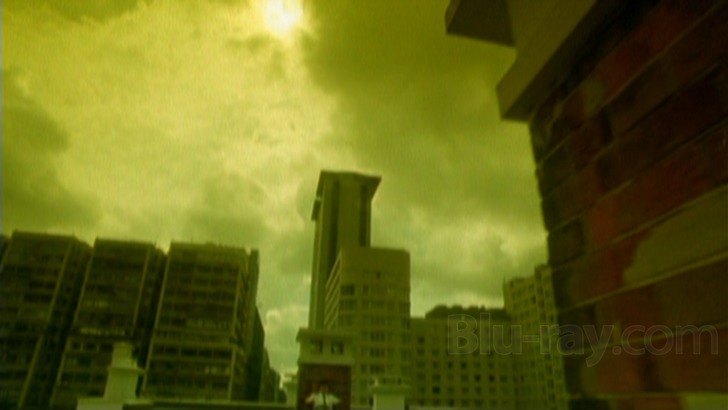
- DOA Final: Original Making of Featurette (1080i; 11:25) is an archival piece with some fun behind the scenes footage.
- DOA Final: Promotional Interviews (1080i; 11:00) has interviews with the cast and crew at what looks like a premiere event.
- DOA Final: Mystery Trailer (1080i; 1:39)
- DOA Final: Theatrical Trailer (1080p; 1:07)
Dead or Alive: Final Blu-ray Movie, Overall Score and Recommendation 
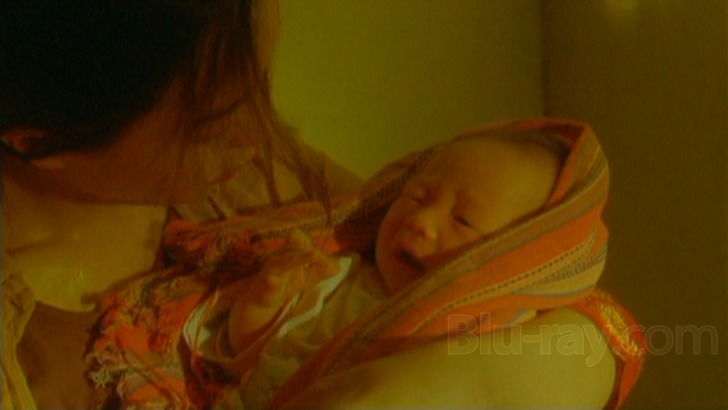
Some curmudgeons may be hoping that the Final in this film's title is truth in advertising, for this is a pretty substantial step downward from the first two Dead or Alive films. Had Miike been able to generate a larger budget, this could have been a rather interesting take on some of the issues raised in Blade Runner. As it stands, it's a wobbly film from any number of standpoints, one further exacerbated by a pretty lackluster technical presentation.
Similar titles
Similar titles you might also like
(Still not reliable for this title)

Dead or Alive 2
2000

Dead or Alive
1999

Shinjuku Triad Society
1995

Ley Lines
1999

Rainy Dog
1997

Stray Cat Rock: Delinquent Girl Boss
1970

Outrage
アウトレイジ / Way of the Yakuza
2010

Hiroshima Death Match
Battles Without Honor and Humanity - Deadly Fight in Hiroshima
1973

Bullet Ballet
バレット・バレエ
1998

Doberman Cop
ドーベルマン刑事 / Doberuman deka
1977

Graveyard of Honor
Jingi no hakaba
1975

Yakuza Weapon
Gokudô heiki
2011

Kill!
1969

Gangster VIP 2
1968

Black Dagger
1968

Gangster VIP
1968

Robotrix
Nǚ jī xiè rén / 女機械人
1991

Massacre Gun
Minagoroshi no kenjû
1967

Street Mobster
現代やくざ 人斬り与太 / Gendai yakuza: hito-kiri yota
1972

First Spaceship on Venus
Der Schweigende Stern / The Silent Star
1960